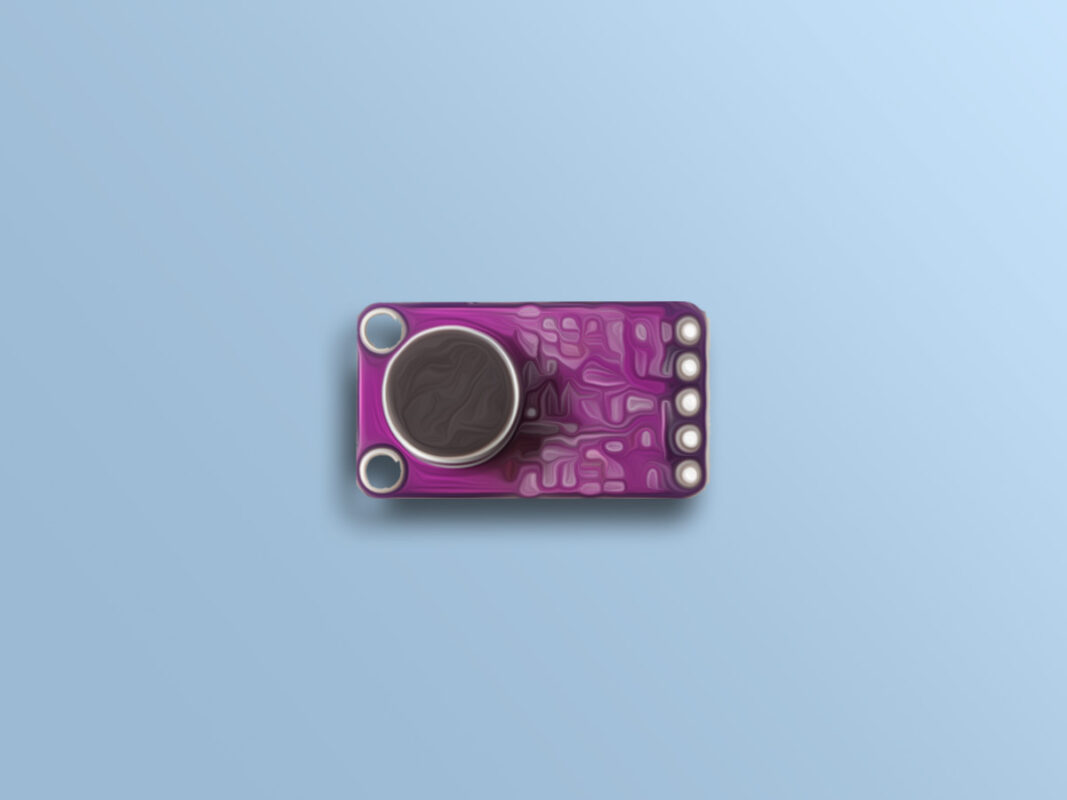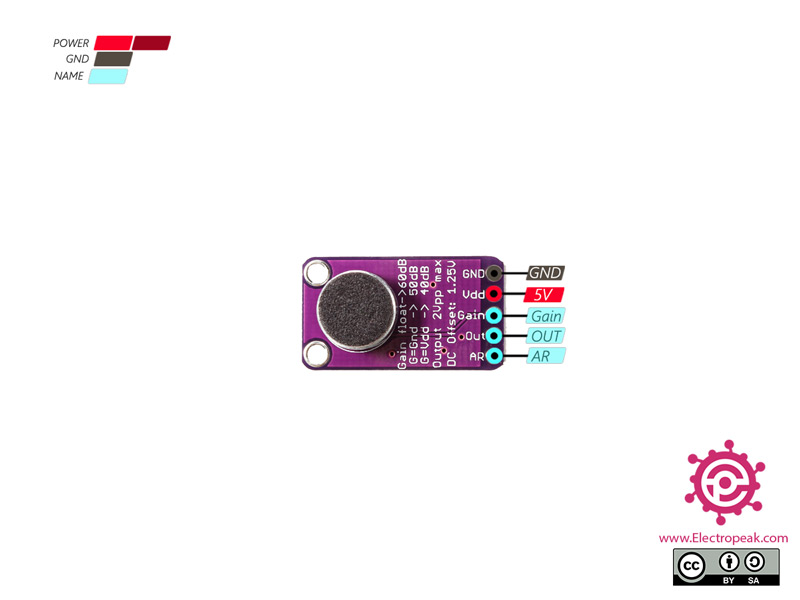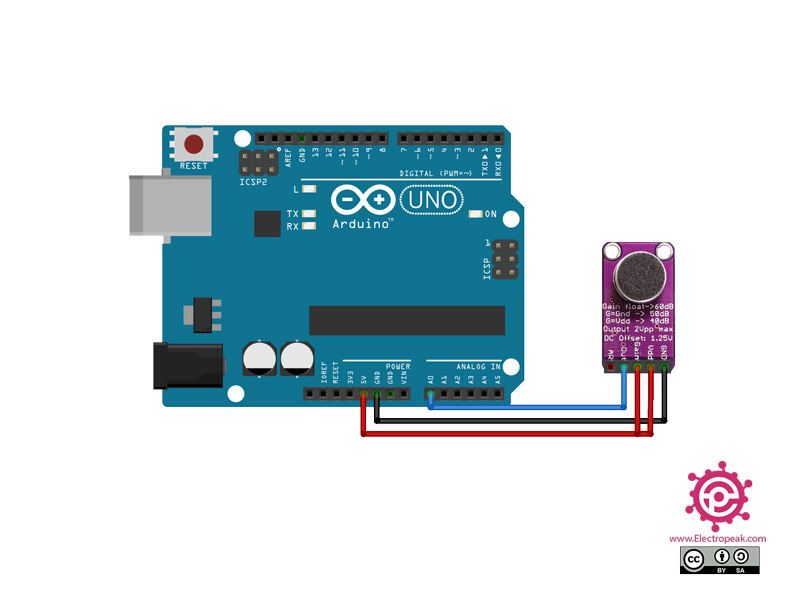MAX9814 Microphone Module Features
Microphone AGC amplifier module, based on MAX9814 chip, has a 2.7V to 5.5V power supply. This device features a built-in low-noise microphone bias. This module can also be connected directly to AUX output.
Note
The module’s output is not zero in silent mode and has an offset 1.25V.
MAX9814 Microphone Module Pinout
This module has 5 pins:
- VCC: Module power supply – 2.7-5.5 V
- GND: Ground
- OUT: Analog data output to the microcontroller
- Gain: Adjusting maximum module output*
- AR: Adjusting module accuracy*
| Disconnected | VCC | GND | * |
|---|---|---|---|
| 60dB | 50dB | 40dB | Gain |
| 1:4000 | 1:2000 | 1:500 | AR |
You can see pinout of this module in the image below.
You can download the datasheet of this module here.
Required Materials
Hardware Components
Software Apps
Interfacing MAX9814 Module with Arduino
Step 1: Circuit
The following circuit shows how you should connect Arduino to MAX9814 module. Connect wires accordingly.
Step 2: Code
Upload the following code to your Arduino.
/*
modified on Sep 8, 2020
Modified by MohammedDamirchi from Arduino Examples
Home
*/
// the setup routine runs once when you press reset:
void setup() {
// initialize serial communication at 9600 bits per second:
Serial.begin(9600);
}
// the loop routine runs over and over again forever:
void loop() {
// read the input on analog pin 0:
int sensorValue = analogRead(A0);
// print out the value you read:
Serial.println(sensorValue);
}
After running the code, you will see the following image in the serial output.







Comments (3)
Hey, I’m looking to buy the MAX9814 Electret Microphone Amplifier for a project and was wondering if this reads in dB or Hz for the y-axis in the example plot shown above? I hope to hear back and thank you!
Hi.
The output of this module is a voltage signal proportional to the dB level of the sound. If you want to measure the frequency, you can apply FFT algorithm on the output voltage of the MAX8914 module.
Fabulous! It’s working, thanks! 🙂 🙂